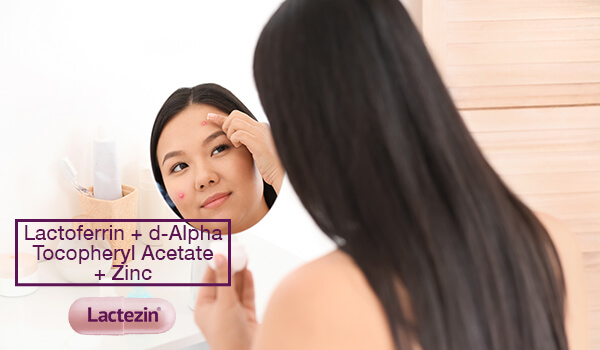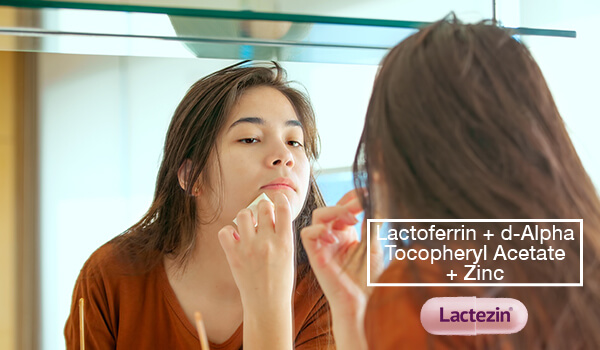What is Milia and Why Does It Look Like Whiteheads

Skincare and dermatology terms are frequently tossed around without caution. Those “blackheads” that you see embedded on your nose might actually just be sebaceous filaments and those “whiteheads” that are on your face are probably milia. Curious as to what exactly these tiny white bumps are and what causes them to spring up?
Let’s find out what milia is and why they look like those pesky whiteheads on the face.
What is milia?
Milia or milium cysts are tiny white bumps that form in groups and are typically found on the nose and cheeks. They form when keratin, a strong protein that’s typically found in hair and nails, becomes trapped underneath the surface of the skin.
What causes milia in adults?
Unlike acne, milia formation is not triggered by hormones. So, to be clear, it is not a type of breakout.
Milia develops when the skin loses its natural ability to exfoliate. Excessive exposure to sunlight is a risk factor for milia since it makes the skin tough and leathery, making it more difficult for the dead skin cells to rise to the surface and shed normally.
Certain ingredients in skincare and makeup products can also cause milia. Try to avoid ingredients such as liquid paraffin, liquid petroleum, paraffin oil, paraffinum liquidum, petrolatum liquid, petroleum oil, and lanolin.
It is also often associated with other types of skin damages. This may include blistering injuries, burns, long-term use of steroid creams, and dermabrasion or laser resurfacing.
What are its symptoms?
Milia is often mistaken as whiteheads since they do, in fact, look alike! They are small, dome-shaped bumps that are usually white or yellow, but rough sheets or clothing may cause it to appear irritated and red. Although not painful, its appearance may cause discomfort for some people.
Milia affects people of all ethnicities or ages, but it is most commonly found in newborn babies, hence its nickname “baby acne.” Areas often affected are the nose, chin, eyelids, or cheeks, however they may also form on other areas of the body, such as the upper torso and limbs.
Aside from whiteheads, milia is also often confused with harmless cysts called Epstein pearls which typically appear in the mouth of newborn babies. Fortunately, this condition doesn’t affect adults however, dental cysts that form near the roots of dead or buried teeth can become infected, causing pain, swelling, and eventually jaw weakness.
Are there different types of milia?
Yup! Milia types are categorized based on the age at which the cysts occur or what’s causing them to develop.
Primary milia is formed from entrapped keratin, while secondary milia develop after something clogs the ducts that lead to the skin’s surface. Think of injuries like burns or blisters.
- Neonatal milia
As the name suggests, neonatal milia develops in newborns and clears within a few weeks. - Juvenile milia
Juvenile milia is caused by rare genetic disorders including Gardner syndrome or nevoid basal cell carcinoma syndrome. - Milia en plaque
A skin plaque is an elevated, solid, superficial lesion that is often associated with different skin conditions, most prevalently discoid lupus, lichen planus, or psoriasis. So if you have plaque covered in milia, it is called milia en plaque. This type mostly affects middle-aged women. - Multiple eruptive milia
This type appears over a span of time, varying from a few weeks to months. This type occurs in which the affected gets repetitive bursts of itchy patches of milia. It is also known to occur to those undergoing cancer treatments. - Traumatic milia
This type of secondary milia happens if you recently had a skin-related injury. The cysts can become irritated, making them look red along the edges.
Can milia be treated?
The good thing about milia is that it will go away within a few months. However if its appearance causes great discomfort, then you can try these treatments to eliminate them.
- Cryotherapy is the most popular and most frequently used method. This is where liquid nitrogen freezes the cysts, making it easier to remove.
- Diathermy is the use of high-energy current via a needle. This, alongside the water content in the treatment area, will produce heat and eventually destroy the cyst.
So, if you’re sure those tiny white bumps on your face are not milia, then try a treatment that targets your whiteheads! Lactoferrin + d-Alpha Tocopheryl Acetate + Zinc (Lactezin) helps lessen pimples and give clearer skin in as early as 2 weeks.
Lactoferrin contains antibacterial properties that aid in reducing inflammation and sebum production by effectively enhancing the body’s natural defenses in fighting bacteria. In addition, it can also help repair damaged skin cells, an important for individuals who have been persistently plagued by pimples, blackheads, and whiteheads on the face.
Lactoferrin + d-Alpha Tocopheryl Acetate + Zinc is the generic name of Lactezin. If symptoms persist, consult your doctor.
If you want to know more about whiteheads and milia, click here.
SOURCES:
https://www.mayoclinic.org/diseases-conditions/milia/symptoms-causes/syc-20375073


